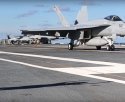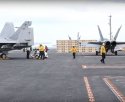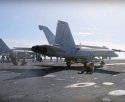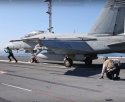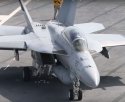Jura The idiot
General
Déjà vu
RIMPAC 2018 Tuesday at 7:04 AM
now
More Monday arrivals at Harbor: 's big assault ship L01, frigates 05 and 156
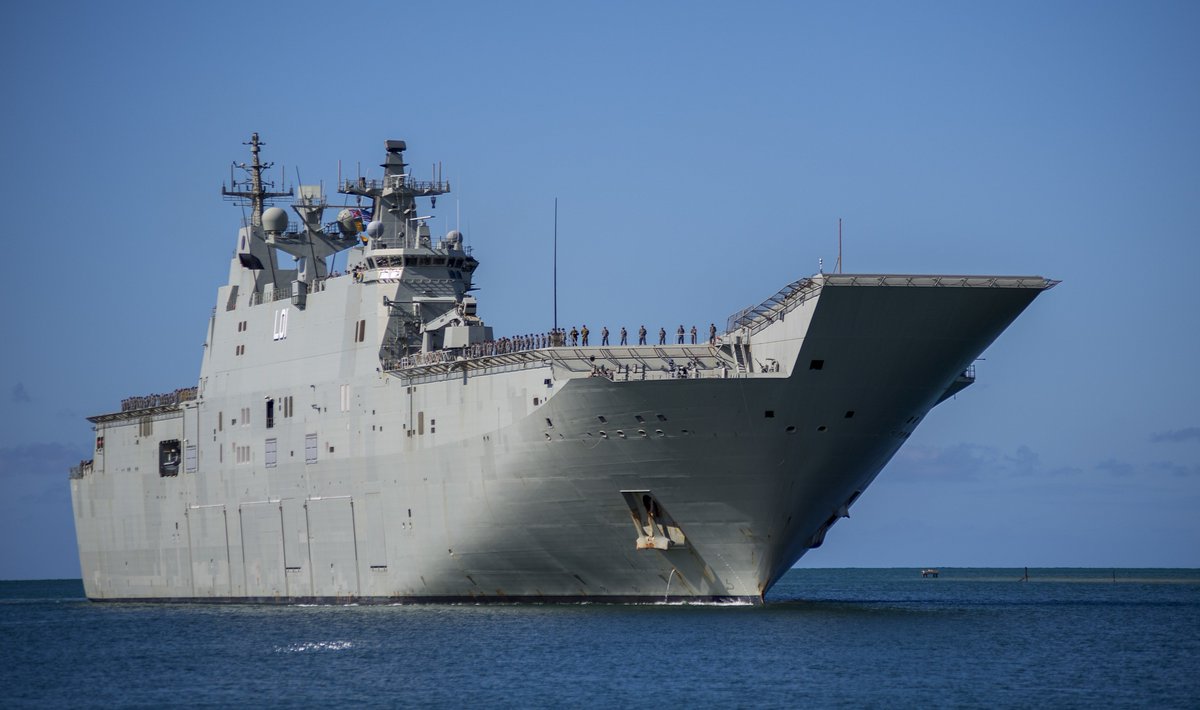
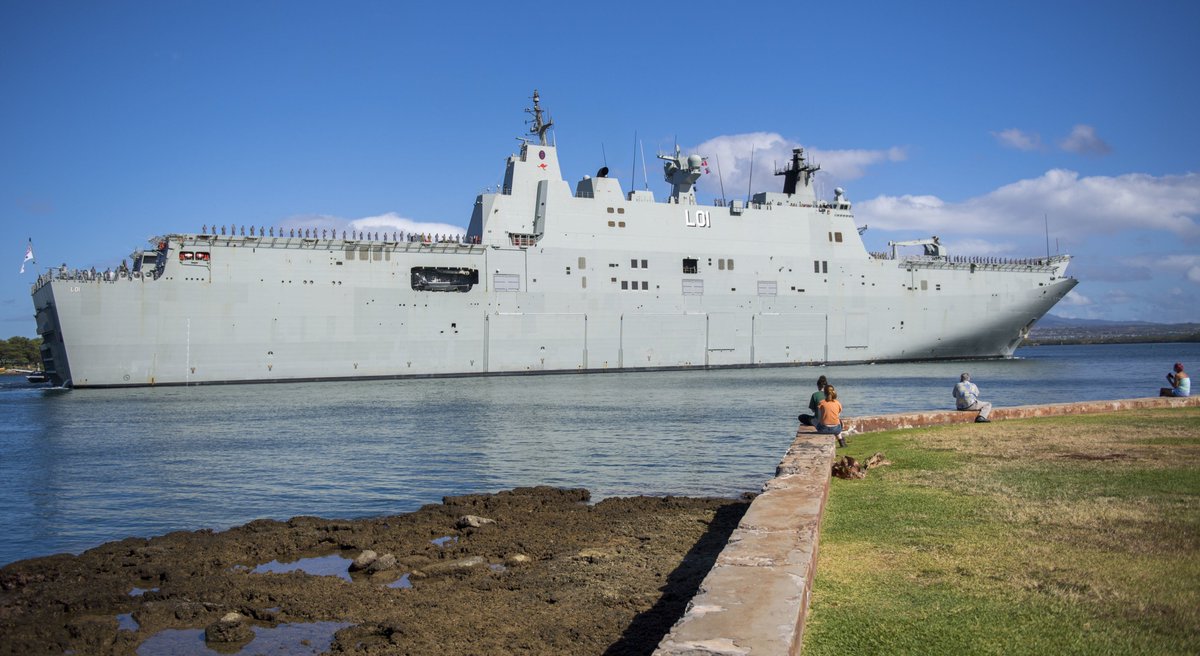
...
Déjà vu
now
More Monday arrivals at Harbor: 's big assault ship L01, frigates 05 and 156


...
Thanks. It's good to know something positive rubs off once in a while! I grew up in the 70s, my only experience of warfare was through movies (surprisingly large number of them filling the TV schedules back then). They were very educational to a degree. Nobody I went to school with was unaware of WW2 or why it happened. We also had the benefit of the early 70s documentary series 'The World at War' narrated by Sir Laurence Olivier (himself a war veteran, he served in The Fleet Air Arm) which spelled out the facts of the war. My generation were in no doubt the Nazis were bad and had to be stopped. But I digress...birds off the Oriskany, and notice the F8-F Crusader with the variable incidence wing, Lee Head, Jeff's Dad was a chief designer on the Crusader and Lead designer on the A7-E Corsair II...... the Crusader was a brute, and tough to bring aboard the boat, a scary chick in the dark, the A-7 on the other hand is one of the safest aircraft ever operated off the boat....
Early fast jet operations were very, very, dangerous, while ALL flying is inherently very dangerous, we've done a great deal to improve the likely hood of surviving every given "sortie", NO guarantee's, but the odd's are a lot better!
Obi Wan, this thrills you as much as BDPopeye and Jeff Head,, in fact I get excited about how pumped up you guys get,,, each of you have brought me tremendous insight into Naval Air, in a way that I never imagined I would understand it, and a love and admiration for those guys and gals who "get it done!"
 Of course I am jesting somewhat (well a bit anyway). There's just something essentially pleasing to the eye about a carrier, the Human eye is apparently drawn to things asymmetrical and there is nothing more lop sided than a Carrier!
Of course I am jesting somewhat (well a bit anyway). There's just something essentially pleasing to the eye about a carrier, the Human eye is apparently drawn to things asymmetrical and there is nothing more lop sided than a Carrier!



The Brazilian Navy commissioned the multi-purpose helicopter carrier PHM Atlantico (A140) on 29 June in the United Kingdom.
The ship, formerly the UK Royal Navy's HMS Ocean (L12), was purchased by the Brazilian Navy through a BRL381.081 million (USD98.76 million) deal on 19 February.
HMS Ocean was commissioned in September 1998 and decommissioned on 27 March at HM Naval Base Devonport in Plymouth. In the Royal Navy the ship will be replaced by the Queen Elizabeth-class aircraft carrier HMS Prince of Wales (R 09).
The helicopter carrier package for Brazil includes an Artisan 3D search radar, KH1007 surface surveillance radar system, four 30 mm DS30M Mk 2 remote weapon systems and four Mk 5B landing craft.
However, the three original 20 mm Mk 15 Block 1B Phalanx close-in weapon systems, the torpedo defence systems and 7.62 mm M134 machine guns were removed from the ship before its transfer to Brazil.
The ship displaces 21.578 tonnes, is 203.43 m long and has a range of 8,000 n miles. It has been undergoing maintenance work by Babcock and BAE Systems since February.
Scheduled to reach its homeport, Arsenal do Rio de Janeiro (AMRJ), on 25 August, PHM Atlantico will undergo operational sea training under the Royal Navy’s Flag Officer Sea Training (FOST) programme.
...
(235 of 277 words)
The aircraft carrier USS Harry S. Truman (CVN-75) has left the Mediterranean Sea and is now operating in the Atlantic Ocean, a defense official confirmed to USNI News.
This week the carrier, the embarked Carrier Air Wing 1 and some of its escorts passed through the Strait of Gibraltar into the Atlantic after spending several days in port in Marseille, France.
“As a matter of longstanding policy, we do not discuss future operations, but I can tell you that the Harry S. Truman Carrier Strike Group will continue to conduct operations in support of our NATO allies, European and African partner nations, coalition partners, and U.S. national security interests,” Cmdr. John Perkins, a spokesman with U.S. Naval Forces Europe and Africa, told USNI News.
The move to the Atlantic is arguably a continued expression of two constituent themes in the Pentagon as of late: a return to great power competition outlined in new strategic planning documents, and the direction from Secretary of Defense James Mattis that U.S. forces need to be “strategically predictable and operationally unpredictable.”
In terms of great power competition, there is growing evidence that Russia continues to push its newest attack submarines to operate the North Atlantic at a pace not seen since the Cold War, Navy leaders have continued to stress publicly.
“Russian submarines are prowling the Atlantic, testing our defenses, confronting our command of the seas, and preparing the complex underwater battlespace to give them an edge in any future conflict,” current U.S. Naval Forces Europe-Africa commander Adm. James in U.S. Naval Institute’s Proceedings in 2016.
“Not only have Russia’s actions and capabilities increased in alarming and confrontational ways, its national-security policy is aimed at challenging the United States and its NATO allies and partners.”
Bryan Clark, a senior fellow at CSBA, said that carrier strike group operations in the Atlantic make sense for high-end exercises for the U.S. and partner nations. Both the U.K. Royal Navy and the French Navy field effective submarine forces that haven’t trained much lately with U.S. surface ships.
“Our Atlantic coast guys need a chance to train against good submariners,” he said. “Either they’re it doing with the French or the British for training or for hope of finding a Russian submarine.”
For its part, the Truman Strike Group embarked with an extensive escort fleet that will include up to six guided-missile destroyers and the German Navy guided missile frigate FGS Hessen (F 221).
Clark said the U.S. DDGs are equipped with an effective anti-submarine warfare packages that work well in the Atlantic but aren’t typically deployed there.
“You have to make a special effort to put them there,” he said.
Chief of Naval Operations Adm. John Richardson has also alluded to an increased Russian submarine presence in public statements about the need for the Navy to operate differently in a new era.
“It’s an aspect of the security environment that it’s getting harder to do things without being observed, no matter where you are. So we’re going to have to be clever about that,” he told USNI News last month.
In line with the Mattis guidance, the Navy is using a so-called dynamic force employment model that in the last several months has broken from the traditional patterns of the last several years.
Earlier in June, the amphibious warship USS Iwo Jima (LHD-7) entered the Persian Gulf after a two-and-a-half-month gap of a capital ship in the region, while two other ships in the Iwo Jima Amphibious Ready Group – USS Oak Hill (LSD-51) and USS New York (LPD-21) – operated in the Baltic and Mediterranean seas, respectively.
“The Navy is making deliberate prioritization decisions in accordance with the [national defense strategy] which may disrupt the ‘business as usual’,” a Navy official told USNI News on Friday. “We must prioritize lethality, deterrence capability, training and readiness of the defined fighting unit, and will ensure the mission is met with the right capability and platform.”
While the Navy did not acknowledge Truman’s mission in the Atlantic, the move harkens back to an exercise from last year.
On its return to Norfolk, Va., the George H.W. Bush Carrier Strike Group operated off of the U.K. as part of Saxon Warrior, an exercise with the U.K., Germany, Sweden and Norway. The exercise was the first in the series since 2011 and was in part prompted by Russian operations in the region, USNI News understands. However, the Truman carrier strike group is expected to continue its deployment for several more months.
related:
The US Naval Air Warfare Center Aircraft Division (NAWCAD) entered the next phase of testing of the Advanced Arresting Gear (AAG) system on its Runway Arrested Landing Site (RALS) at Joint Base McGuire-Dix-Lakehurst, New Jersey, on May 24. The testing, which will be completed this summer, will clear the C-2A Greyhound carrier onboard delivery aircraft and E-2C/D Hawkeye airborne early warning aircraft to operate with the system, which is installed on the new aircraft carrier USS Gerald R. Ford (CVN 78).

Oriskany an Essex do about same size than Clemenceau Class and we have 42 F-8 for 2 Flotillas until 1999 in service in one i know the stuff ...birds off the Oriskany, and notice the F8-F Crusader with the variable incidence wing, Lee Head, Jeff's Dad was a chief designer on the Crusader and Lead designer on the A7-E Corsair II...... the Crusader was a brute, and tough to bring aboard the boat, a scary chick in the dark, the A-7 on the other hand is one of the safest aircraft ever operated off the boat....
Early fast jet operations were very, very, dangerous, while ALL flying is inherently very dangerous, we've done a great deal to improve the likely hood of surviving every given "sortie", NO guarantee's, but the odd's are a lot better!
Obi Wan, this thrills you as much as BDPopeye and Jeff Head,, in fact I get excited about how pumped up you guys get,,, each of you have brought me tremendous insight into Naval Air, in a way that I never imagined I would understand it, and a love and admiration for those guys and gals who "get it done!"
My Dad was the Chief Engineer for structure and dynamics for the F-8 crusader and A-7 Corsair II.Some Cross Decking Memories from HMS Victorious in the 60s:View attachment 47479
A sight soon to be repeated when USMC Lightnings deploy alongside RN/RAF ones on the QECs in the next few years.
